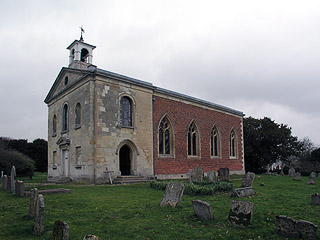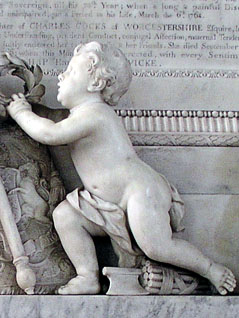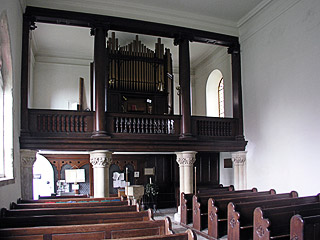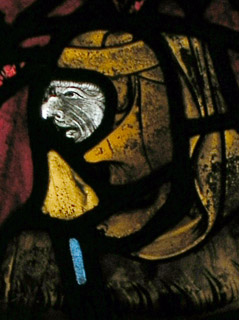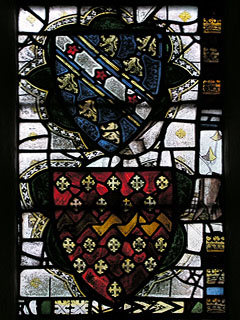St Andrew is a dramatic example of what happens when a noble family entirely dominates a village. There was a medieval church here, surrounded by a little medieval village, but nothing of it now remains: there are only a few Victorian cottages for estate workers on the main road from Cambridge. Instead, St Andrew now holds company with Wimpole Hall, the most impressive mansion in Cambridgeshire.
Well, reputedly, anyway. It costs a lot to get in, and most of the grand apartments are very run-of-the-mill. The basement - containing servants' rooms and the kitchens - was interesting, and the great walled vegetable garden is lovely. On the whole, though, I think ones time and money would be better spent going somewhere else.
Alas, the same can be said of the church. Of the medieval fabric, only a small side chapel remains, and even that has been restored almost out of all recognition. The rest is a rebuilding of 1749. The nave is built of brick and looks vaguely gothicky (having been renovated according to the latest tastes by Victorians), but there is a cool classical stone façade facing the hall itself. The inside is just as incoherent - 18th century Italianisms (Venetian east window, Ionic columns in the gallery) struggling with 19th century Gothick for supremacy. Parish church? Technically, I suppose - but there's little of the parish there.
Instead, we have grand monuments to the great and good who have lived at Wimpole Hall. Most of them are in the Chichley chapel - the aforementioned medieval survival - and they are very impressive.
The Earls of Hardwick and other members of the Yorke family (the family that owned Wimpole from 1740) are represented in profusion, with tasteful monuments carved by the best stonemasons of the day. The only one that I specifically noted was the great chest tomb of Philip, Third Earl of Hardwick, who died in 1834. He lies, asleep in the robes of a Knight of the Garter, dominating the centre of the chapel, and gets points for sheer arrogant bravado.
Despite the excellent quality of the rest, though, I can remember almost nothing save an impression of a space very full of obelisks, cherubs, urns and effigies. There was also a fine clerical brass set in wood in the south east corner of the chapel, commemorating one Thomas Worlsey who died in 1502: the figure is quite large, and the images of the Virgin and child above are a rare survival.
The best thing about St Andrews is also just about the only medieval survival - the north window of the Chicheley chapel. This contains some wonderful late medieval heraldic glass, with the shields of numerous grand East Anglian families: Uffords, Bohuns, de Lyles and Tollemaches, amongst others. In the middle is a picture of William de Ufford, Earl of Suffolk, who was an enthusiastic supporter of King Richard II during the Peasants' Revolt.
In retrospect, it puzzles me that I should have liked the window, but disliked the monuments on the grounds that they represent the self-importance of an overbearing noble family. Both are just the emanations of family pride - advertisements of lineage and power. Perhaps it's just a cult of age - being medieval makes oppression more palatable, perhaps - but I'd like to think that I'm not so shallow. Another thing is that there are none of the little signs of life here that speak of a community weaving itself through a building over the centuries: just as in life they cleared the village away from the front of their huge house, the Yorkes in death so dominate the church that there's no sense of a community at all.
Perhaps even closer to the mark, though, is that I didn't want to have to write about those monuments: I resented the fact that they were notable, and praiseworthy, and numerous. They demanded to be written about, and I didn't want to write about them. I resolved instead to write about the odd little details that attracted my eye - the shade of brown used for Earl William's robe in the window, for example, which is a colour I've not seen before in a medieval window. However, I knew that I'd have to write about those stone Yorkes, and so I have, even if only to grumble about them. I'd just visit the vegetable garden instead, if I were you.
St Andrew is usually kept open, and you don't need to buy a ticket for the hall to get in.
